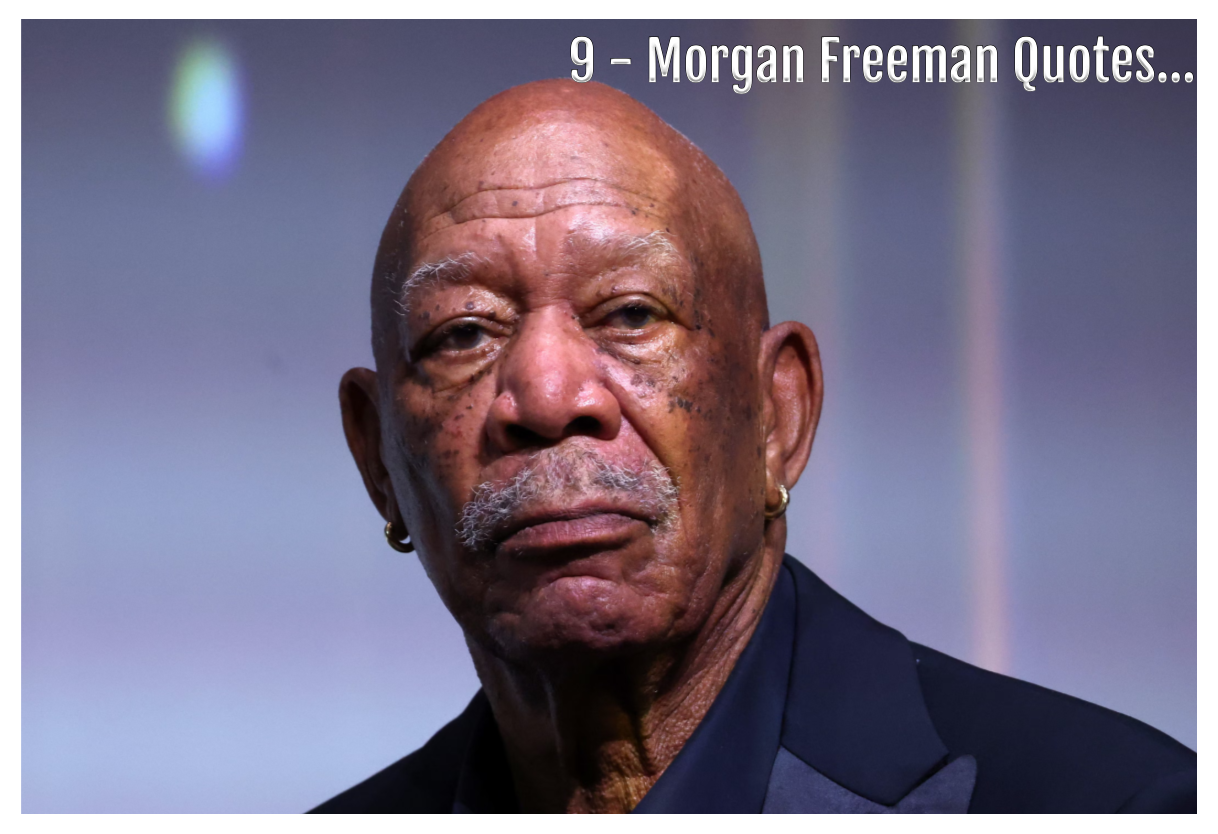(ThyBlackMan.com) When people think of Jimi Hendrix, they often picture the explosive stage presence, flaming guitars, and unforgettable hits like “Purple Haze” or “All Along the Watchtower.” But there’s another side to Hendrix—one that’s often overlooked. Beneath the rock icon exterior was an introspective artist, a composer of moods, and a man deeply connected to emotion, storytelling, and sonic experimentation.
This list isn’t about the most famous Hendrix songs—it’s about the ones that reveal who he truly was when the lights were low and the tape was rolling. These eight tracks highlight his versatility, his soulfulness, and the creative risks he took that still sound fresh decades later. Whether you’re a longtime fan or just getting into his catalog, these songs deserve your full attention.

1. “1983… (A Merman I Should Turn to Be)
This epic, nearly 14-minute psychedelic voyage is one of Hendrix’s most experimental and ambitious works. “1983… (A Merman I Should Turn to Be)” isn’t a radio hit or festival crowd-pleaser—it’s a deeply introspective soundscape. The track unfolds like a dream, blending jazz, space-rock, and ambient textures, revealing Hendrix’s willingness to transcend the limitations of rock music.
Lyrically, the song is rich with dystopian imagery and aquatic metaphor. Hendrix imagines an escape from war and societal collapse by descending into an underwater utopia—a theme still relevant in an era marked by social disillusionment and climate anxiety. This underwater rebirth metaphor was bold for its time and feels even more profound today, as people long for peace in the chaos of modern life.
Musically, it’s not about guitar heroics—it’s about mood. The reversed cymbals, delay effects, and Mike Finnigan’s ethereal flute passages create a fluid, surreal ambiance. Hendrix’s guitar is often submerged in the mix, dripping like sonar waves or bursting into feedback-laden squalls. It’s a track best listened to alone, preferably with headphones, letting the story wash over you.
It’s also important to consider how this song reflects Hendrix’s artistic mindset toward the end of his life. He was moving toward conceptually driven, genre-defying compositions—far from the explosive festival anthems that made him famous. The sonic layering here anticipates ambient music, post-rock, and even modern electronic textures. “1983…” is cinematic, introspective, and ahead of its time.
Even now, it holds up as one of the finest examples of progressive rock before the genre was formally named. It shows Hendrix as more than a virtuoso—he was a composer of worlds. “1983…” isn’t just a song—it’s an experience, a journey into the psyche of a man wrestling with reality and finding solace in the surreal.
2. “Angel”
Released posthumously, “Angel” offers a glimpse into the tender side of Hendrix—often overshadowed by his explosive guitar theatrics. Inspired by a dream about his mother, this ballad reveals a man searching for comfort and transcendence through spiritual connection. For listeners today, “Angel” is a healing song, a sonic prayer that feels timeless in its sincerity.
Hendrix’s vocals here are vulnerable and soft, contrasting the howling blues and rock he was known for. There’s an aching beauty in how he sings “Fly on my sweet angel, tomorrow I’m gonna be by your side.” It’s a simple line, but in his voice, it feels like a sacred promise. His delivery isn’t flashy—it’s full of longing, almost whispering across time and space to someone who can no longer respond.
The guitar work is subdued yet masterful—lush chord voicings shimmer over a gentle rhythm. There’s a gospel undertone to the song’s structure, and Mitch Mitchell’s drumming is restrained and respectful, letting Hendrix’s melody float freely. The outro solo is one of his most emotionally articulate, singing through the strings without ever needing to shred. His guitar, as always, does the crying he doesn’t allow himself in voice.
What makes “Angel” so moving is how universal it feels. Whether you’ve lost a parent, a partner, or are simply craving something beyond this world, the song becomes a kind of hymn. In today’s music landscape, filled with artists expressing vulnerability, “Angel” feels right at home. You could easily imagine it being sampled or covered by artists like H.E.R., Frank Ocean, or Daniel Caesar.
In an era where vulnerability in music is celebrated, “Angel” fits perfectly alongside modern neo-soul or lo-fi R&B playlists. It proves Hendrix was more than just a performer—he was a deeply feeling artist. It reminds us that behind every guitar god is a human being longing for love, memory, and meaning.
3. “Pali Gap”
If there were ever a track that encapsulates Hendrix’s pure instrumental voice, it’s “Pali Gap.” An instrumental piece with no official lyrics, this song feels like an exhale—a relaxed yet intricate composition filled with groove and melodic interplay. Often overlooked, it stands as one of the most fluid guitar instrumentals in his catalog.
The mood of “Pali Gap” is meditative. It starts with a few gentle notes, then blooms into an extended improvisation that shows Hendrix’s tastefulness and restraint. His phrasing is conversational; no note feels wasted. The bends, harmonics, and vibrato are all delivered with elegance and intention. It’s less about structure and more about letting the melody guide you where it wants to go.
What’s striking is how the track plays with space. Hendrix lets silence do some of the talking, giving the listener time to absorb the textures between licks. There’s a serene, almost Hawaiian feel to the tonality—perhaps a nod to the song’s namesake location in Maui. Billy Cox’s bass is warm and melodic, while Mitch Mitchell’s drumming adds jazzy dynamics. It’s an organic trio performance, guided by feeling more than form.
“Pali Gap” also offers insight into Hendrix’s potential had he lived longer. He was exploring new tonal palettes, moving into jazz-fusion territory while still maintaining his blues foundation. The gentle use of effects—phaser, reverb, and tape delay—adds a dreamlike shimmer to the track, making it feel suspended in time.
Listening to “Pali Gap” today is like taking a peaceful walk through nature. It belongs on relaxation playlists, in yoga classes, or as background music for thoughtful journaling. It’s Hendrix at his most serene. It whispers instead of roars, proving that even in silence, his guitar could say everything.
4. “Castles Made of Sand”
“Castles Made of Sand” is perhaps Hendrix’s most poetic composition. Clocking in at under three minutes, it delivers a heartbreaking, three-verse narrative about fragility and impermanence. With its blend of blues storytelling and dreamlike imagery, it’s a song that resonates across generations.
Each verse tells a different story: a child betrayed, a couple torn apart, and a disabled man finding purpose too late. Yet, they all circle the same theme—life is unpredictable, and even the strongest foundations can be swept away. Hendrix’s ability to write with such empathy and depth is part of what makes him a transcendent artist. These vignettes aren’t just storytelling—they are observations on the ephemeral nature of human hope.
The music itself is wistful. The reversed guitar lines, soft wah-wah effects, and subtle percussion give the track a surreal, hypnotic feel. The chord progression is jazzy, yet emotionally direct. It’s melancholic without being melodramatic—a tough balancing act that Hendrix nails. His voice is calm, nearly resigned, as though he’s offering these tragedies as truths he’s come to accept.
It’s also notable how Hendrix, a Black man in 1960s America, wrote this song without ever directly referencing race or politics—yet it remains deeply political. The injustices, the futility, the crushed dreams are all reflective of marginalized lives. That Hendrix chose subtlety rather than polemic makes the message all the more powerful. He was saying: this pain is universal, and no one is immune.
In today’s uncertain world, the song hits hard. “Castles Made of Sand” encourages listeners to embrace life’s fragility without despairing over it. It’s perfect for introspective nights or long drives where you need space to feel. In just a few short minutes, Hendrix manages to capture the joy, pain, and fleeting beauty of life—like castles made of sand that slip into the sea, eventually.
5. “Have You Ever Been (To Electric Ladyland)”
At just two and a half minutes, “Have You Ever Been” is Hendrix’s version of a soulful lullaby. This track introduces listeners to the sonic utopia of Electric Ladyland, his imagined world of liberation, peace, and artistic freedom. It’s easy to miss if you’re skimming the album—but it’s worth your full attention. It’s the calm before the cosmic storm—a gentle opening to a record that later explodes with distortion, improvisation, and revolutionary energy.
The vocals are rich with layered harmonies—something rarely associated with Hendrix’s music. Here, he channels his love for Curtis Mayfield and doo-wop, singing in a falsetto so smooth it glides over the listener like velvet. His voice blends effortlessly with overdubbed harmonies, creating an angelic, almost gospel-like wash of sound. It’s a welcome reminder that Hendrix was a vocalist with range and soul, not just a six-string sorcerer.
The song’s structure is minimal but elegant. The chords are jazzy, with a bossa nova undertone, and the melody gently dances above the instrumentation. It doesn’t try to impress—it invites you in, like the opening moments of a spiritual retreat. Hendrix’s guitar fills are delicate and fluid, guiding the listener through the emotional landscape. You hear restraint, finesse, and respect for melody—qualities sometimes overshadowed in Hendrix’s heavier catalog.
What’s so moving about this song is that it’s clearly personal. “Have you ever been to Electric Ladyland?” isn’t just a question—it’s an invitation. Hendrix is inviting us to his sanctuary, a place of creative freedom and unbound identity. For modern listeners seeking calm and grace in their playlists, this song is gold. It’s Hendrix offering you peace before the album plunges into chaos. It’s also a taste of the kind of soul-fusion work he might have explored more deeply had he lived.
6. “Drifting”
“Drifting” is another overlooked gem that showcases Hendrix’s softer side. A posthumous release, it’s an ambient, dreamy song about spiritual exploration and gentle surrender. It speaks to the idea of floating above the worries of the world—something many people crave today more than ever. In a world oversaturated with digital noise and overstimulation, “Drifting” feels like a moment of real serenity.
The lyrics, simple yet profound, describe someone “drifting on a sea of forgotten teardrops.” Hendrix’s voice is calm and low, as if he’s whispering from another dimension. There’s no bravado here—just honest resignation and reflection. The vocal phrasing is unhurried, as if he’s singing from within a trance or a lucid dream. It’s a lullaby for adults worn out by life’s struggles, offering neither solutions nor judgment—only stillness.
The production on “Drifting” is stellar. Guitar overdubs shimmer like stars, and the solo is played with so much restraint and control that it feels meditative. Hendrix doesn’t rip through scales—he explores tone, touch, and texture. Mitch Mitchell’s brush drumming and Buzzy Linhart’s vibraphone add even more atmosphere, elevating the track into something that feels cinematic. The song feels like it’s suspended in air, weightless and glowing.
It’s also worth noting how forward-thinking this track is. “Drifting” sounds like it could be a Bon Iver or James Blake demo. It fits seamlessly into modern playlists designed for mindfulness, self-care, or late-night soul searching. It’s sonic therapy—a reminder that Hendrix was as capable of stillness as he was of storm. If there’s a musical form of floating through space in your own mind, this is it.
7. “It’s Too Bad”
Originally unreleased in his lifetime, “It’s Too Bad” is Hendrix’s response to familial betrayal—particularly regarding his brother Leon. The song is raw, both emotionally and musically. You hear a man grappling with fame, family, and frustration, laying it all out through blues phrasing and lyrical directness. It’s as honest as Hendrix ever got—no masks, no metaphors, just real-life pain put to tape.
Unlike his usual metaphor-laden lyrics, this track is pointed. He names his brother directly, singing, “My brother he just don’t understand.” There’s an ache in his voice, an urgency in the delivery that breaks through even decades later. This isn’t rock star Hendrix—this is a man bleeding truth. You can feel the tension in every syllable. It’s like you’ve walked into a room you weren’t supposed to be in and stumbled onto a private confessional moment.
Musically, the track leans hard into slow blues. The guitar solo is deliberate, almost reluctant, as though Hendrix is trying to talk himself out of caring—but the emotion leaks through every bend and slide. There are moments of searing intensity and moments where everything falls back into silence, mimicking the emotional yo-yo of strained family ties. The drums are sparse, and the production feels intimate, like you’re in the studio with him as he unloads years of silent disappointment.
This song resonates today in a world where public figures often deal with private pain, especially in an era where everyone’s story is online. “It’s Too Bad” is Hendrix unmasked. It’s a reminder that behind every legend is a human being. And in its bluesy honesty, it joins a lineage of great confessional songs—from Marvin Gaye’s Here, My Dear to Amy Winehouse’s Back to Black. It deserves that kind of reverence.
8. “Machine Gun”
If there’s one Hendrix song that stands as a political and emotional statement, it’s “Machine Gun.” Performed live with the Band of Gypsys at the Fillmore East, the song is a visceral commentary on the Vietnam War, racial injustice, and violence in America. Even without lyrics, the music speaks volumes. This is protest music—not with slogans or chants, but with sonic devastation.
The track opens with eerie, echoing notes before erupting into a chaotic yet controlled storm. Hendrix uses his guitar to simulate gunfire, explosions, and screams—making his instrument an extension of the battlefield. His improvisation is technically stunning but never self-indulgent—it serves the message. With just feedback, whammy bar dives, and distortion, he paints scenes of terror, grief, and resistance.
What makes “Machine Gun” so powerful is its authenticity. It wasn’t written in a studio—it was birthed onstage, in the moment, fueled by the electricity of protest and grief. Buddy Miles’ drumming and Billy Cox’s bass provide a dark, hypnotic groove that carries the weight of Hendrix’s vision. The band doesn’t try to overwhelm; instead, they offer a backdrop for the storm that Hendrix conjures.
The song’s cultural weight remains enormous. Listening to “Machine Gun” in today’s world of ongoing social unrest, mass shootings, and wars, it still hits like a punch to the gut. It’s as relevant now as it was in 1970, proving Hendrix’s art was not just innovative—it was prophetic. “Machine Gun” isn’t just a song—it’s a warning shot, a dirge, and a battle cry all in one. In Hendrix’s hands, the guitar wasn’t just a weapon of art—it was a weapon of truth.
Jimi Hendrix was far more than a rock legend with a wild stage presence—he was a deeply expressive musician whose quieter, more nuanced work continues to inspire. The tracks on this list are proof that Hendrix could be as tender as he was thunderous, as poetic as he was powerful. In them, we hear not just a revolutionary guitarist, but a whole human being: vulnerable, spiritual, visionary.
These songs remind us that Hendrix’s legacy isn’t just in the history books—it’s alive in every note, still speaking to us across time. So if you’ve only scratched the surface of his greatest hits, dig deeper. There’s a whole world of Hendrix waiting for you—and it’s more soul-stirring than you might have imagined.
Staff Writer; Jamar Jackson

















Leave a Reply